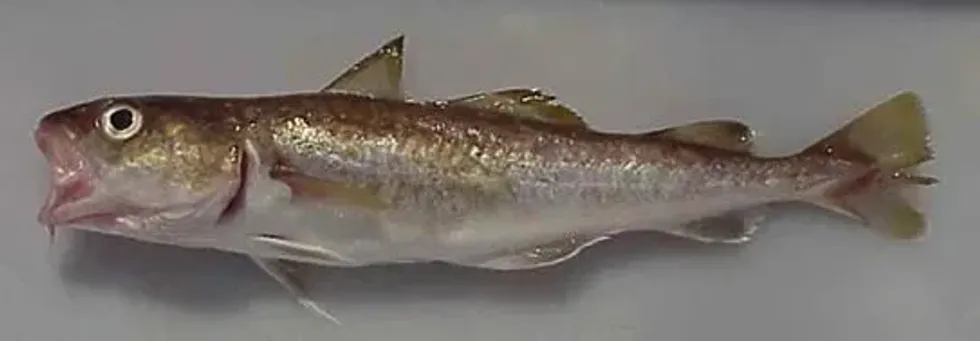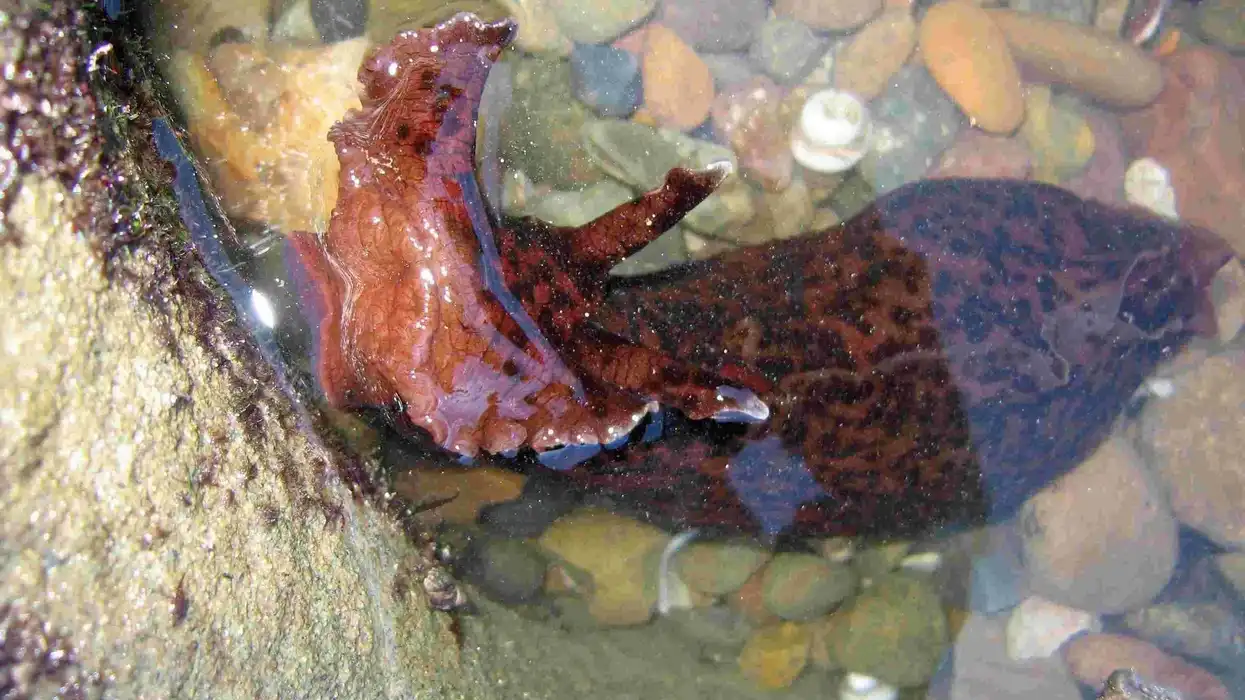Found in the cold, deep waters of the Northern Pacific, including the Bering Sea, the Pacific cod is a large fish growing up to three feet in length. Most people are well aware of cod due to their high commercial value.
Cod liver oil is a great source of nutrients whereas Pacific cod fillet is sold as a delicacy across countries. It is the Pacific cod that was originally used in the fish n' chips recipe which gave it the name true cod.
The color of Pacific cod may depend on its habitat as those dwelling near the sea bottom may have colors suited for camouflage. Gray-colored Pacific cod are thus known as gray cod.
Pacific cod may migrate as far as 490 miles in a year from the Gulf of Alaska to around the west coast of Norway. Cod range in size from three to six feet with both sexes being roughly similar sizes.
The males generally display dominance whereas the female chooses the partner based on status. Due to this, size plays an important factor as larger males are more prone to being chosen by females as partners.
Their size also affects which shoal they become a part of. Read on to know more fun facts about the Pacific cod.
If this interests you, check out fish like plaice and flounders.
Pacific Cod Interesting Facts
What type of animal is a Pacific Cod?
The Pacific cod is a type of marine deep-sea fish.
What class of animal does a Pacific Cod belong to?
The Pacific cod belongs to the class of Actinopterygii, or rayfinned fishes like porcupine fish, bonitos, and stargazers.
How many Pacific Cod are there in the world?
The estimated population of Pacific cod in the North Sea (between the Atlantic and UK) is 21 million. However, this figure does not include those in fisheries. Other places like the Gulf of Alaska and California sport lower numbers.
Where does a Pacific Cod live?
The Pacific cod is found in the continental shelf of the North Pacific Ocean, along the east and west coast. The Pacific borders several countries.
Hence, they are fished from the west coast of the US, the west coast of the Sea of Japan, Colombia, Peru, Honduras, El Salvador, Ecuador, and Costa Rica. They are also found along the Gulf of Alaska, the Bering Sea, and the Aleutian Islands.
Little is known about their population and dynamics in the Aleutian Islands or the Bering Sea.
What is a Pacific Cod's habitat?
The Pacific cod prefers to live in cold and deep waters, mainly inhabiting the Neritic and Benthic zones of the ocean. They have been found up to a depth of 0.7 miles and generally live along the continental shelf. Their preference for cold water means that they are especially susceptible to climate change.
Who do Pacific Cod live with?
The Pacific cod prefers to live in groups known as shoals. They likely form these shoals due to their social benefits. As migratory fishes, cod travel along marine thermal paths for feeding and spawning. The shoals have a proper structure and are generally based on size.
How long does a Pacific Cod live?
Generally, cod living in the ocean have an average lifespan of 20 years. Some cod in fisheries have been known to live up to 25 years of age.
How do they reproduce?
Female cod can reproduce once they are four to five years of age. The spawning period is from January to May. The Pacific cod, Gadus macrocephalus, tends to move from the deep sea towards the middle continental shelf region for mating, at around 100 or 200 m deep.
Males and females have separate spawning schools. The Pacific cod, Gadus macrocephalus, reproduces over a period of one to two months.
Eggs are laid in various batches with an average of eight batches per year. Each batch may have between four and six million eggs. During its lifetime, a female may lay as many as 90 million eggs.
The hatching percentage is around 40%. It is the female of the species that released the gametes which are then fertilized by the male of the species.
The released eggs flow along the water without being docked anywhere. Once it hatches, the young cod also floats freely. A single brood of offspring may have multiple fathers as the cod population engages in varied mating strategies.
What is their conservation status?
The current status of Pacific cod as per the IUCN is not listed. While there are no ongoing efforts to conserve their numbers, some of their habitats fall under Marine Protected Areas.
This started in the '80s and '90s when the number of Norwegian cod fell dangerously low. Their current fishing levels are within an acceptable zone though their population distribution varies from place to place.
For example, the Gulf of Alaska has a lower than recommended population of cod. Whereas the Bering Sea has an optimal level of cod population.
Over years of breeding, there are a few emerging differences between that of sea caught or fishery cod and the true cod. For example, the Pacific codfish when bred in captivity can generally survive in low-salinity water.
Pacific Cod Fun Facts
What do Pacific Cod look like?

The cod of the Pacific ocean has a streamlined body with a grayish or brownish color. Like most sea fish, their underbelly is typically lighter in color.
The Pacific cod species has whiskers near its mouth, similar to that of a catfish, including a very distinctive chin barbel. It has a total of three fins on top and two at the bottom. Cod species that are larger in size sometimes have unnaturally large heads with their gills spanning a third of their body.
How cute are they?
The Pacific cod is a quite neutral-looking fish. Whether they are from the Gulf of Alaska or the Bering Sea, most cod have two large eyes on either side of their head and a large mouth with wide lips.
Their scales are spotted and their chin barbel makes them instantly recognizable though it does not offer any extra cuteness to their look.
How do they communicate?
The Pacific cod is a demersal fish that lies low on the ocean floor. The lack of visual cues at this depth means such fish generally rely on other forms of communication. Some demersal fish have muscles to make drum-like sound effects. Others communicate by vibrating their swim bladder and detecting movements with their lateral line.
How big is a Pacific Cod?
Usually, the gray cod has a length of three to four feet. However, the largest cod ever caught was six feet long! Northern snakeheads are approximately the same size as an average Pacific cod.
How fast can a Pacific Cod swim?
The cod population is a slow-moving one. It is estimated that both Pacific and Atlantic cod move at the same speed through exact experiments that have only been carried out on the latter.
The Atlantic cod is known to attain a speed of up to 1.1mph. A higher water temperature causes Atlantic or Pacific cod to become more active, or rather frantic.
How much does a Pacific Cod weigh?
On an average, the North Pacific sea cod weighs around 26.4 lb. The largest one ever caught weighed 103 lb.
What are their male and female names of the species?
Both males and females of the North Pacific cod species are known as cod.
What would you call a baby Pacific Cod?
A baby North Pacific cod is known as a codling.
What do they eat?
Cod eat smaller jellyfish, krills, herrings, crabs, worms, and shrimps. In the Pacific cod fisheries and farms, they are fed commercial-grade fish food. This includes protein-rich defatted biomass made from a variety of ocean fish and oil.
Are they dangerous?
Cod rarely come into contact with humans as they live in the deep sea. Consuming them is much safer than other deep-sea fish like tuna as they contain lower mercury levels. Cod are well-known predators, and if removed from the ecosystem, huge growth in the population of their prey is seen.
Would they make a good pet?
Cod prefer deeper, colder water. While one can keep a Pacific cod as a pet, it will require a large tank of at least 6 feet in length. Cod are mostly inactive and will not provide entertaining company.
Their diet consists of smaller fish and worms. One can also buy the feed that fisheries use, though being larger fishes they do consume a lot of food! Some pet cod become used to eating chicken though this is not recommended.
Did you know...
Fisheries in the US harvest the Pacific cod responsibly. The fisheries are also subject to strict laws regarding the exact locations where they may fish and the type of gear they may use.
Improper gear may often result in many other types of fish being caught in the nets, which the fishery then usually discard. Hence, there are also laws that protect cod caught by mistake in the gear meant for other fish.
The U.S. Pacific cod fisheries usually fish in the Bering Sea, Aleutian Islands, off the Gulf of Alaska, and along the west coast of the US. Among these, the Gulf of Alaska is the one that has best maintained its stock.
10.7% of any catch in the Bering Sea and the Aleutian Islands is reserved for local, fishing-dependent communities. All the bottom trawls and gear on the West Coast are managed under one trawling compliance organization. The exact fishing data of the West Coast is not available.
The gear used to catch them includes a trawl or a net which is anchored on one end. The trawling gear has hooks that contain baits on them. Fisheries divide catch based on the gear used as well.
Eating Pacific Cod
Being of commercial value, there are many cod fishery zones that catch and harvest cod in the Northern Pacific. The Marine Stewardship Council offers approvals to a cod fishery.
A cod fishery with an MSC certification means that the cod sold is sustainable and not overfished. Fisheries catch cod in the Pacific Ocean by using boats with bottom trawls.
The cod population lives in shoals which makes the use of bottom trawls ideal for a huge catch. It is estimated that fishers catch around 500,000 cod every year in the North Sea alone, however, in the Pacific cod fisheries, the catch is highly regulated.
In the Atlantic ocean, the fishing and fishing gear for cod is governed by various rules. Such as a fishery must not waste any caught cod.
Once caught, the ocean cod is often sold as is or transformed into fillets. Cod fillet is available in most major supermarkets.
Eating ocean-caught Pacific cod is quite healthy as these species have lower mercury levels and are rich in proteins and omega 3 fatty acids. One can cook cod in butter, bake it or serve it as a side dish with lemon and honey.
Comparisons with other Codfish
There many species of cod. Among these, the Atlantic cod and the Pacific cod are quite similar looking. Fisheries are known to sell their catch interchangeably in the market. The Atlantic cod is a much more voracious predator than the Pacific cod and its flesh is slightly drier. The Pacific species is also smaller than the Atlantic cod.
Here at Kidadl, we have carefully created lots of interesting family-friendly animal facts for everyone to discover! Learn more about some other fish including king salmon and codfish.
You can even occupy yourself at home by drawing one of our Pacific Cod coloring pages.









